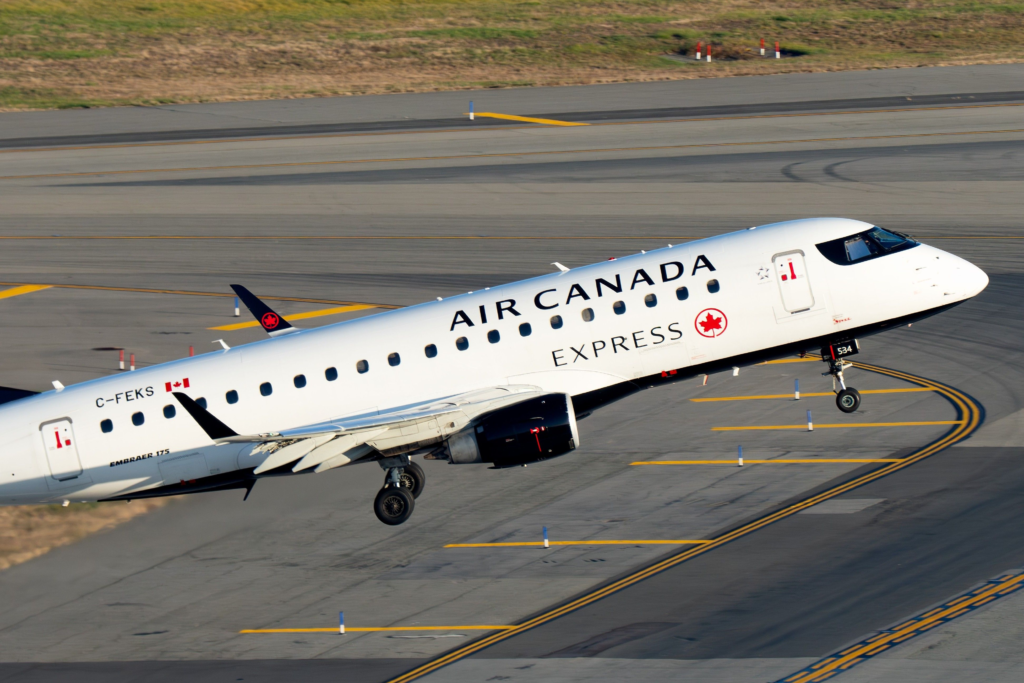Over the weekend, Air Canada’s operations faced significant disruption as a result of planned industrial action taken by members of cabin crew at the Canadian flag carrier. The strike, which was issued last week with a 72-hour notice, had operational implications even before it began, as Air Canada canceled flights in the days leading up to the industrial action, affecting around 8,000 guests on August 14.
Now, the airline has been presented with a further mountain to climb in the form of strikers defying a return-to-work order, which has ultimately prevented Air Canada from restarting its operations as planned. The ![]() Star Alliance member has also suspended its Q3 and full-year guidance, with the CIRB calling the strike unlawful.
Star Alliance member has also suspended its Q3 and full-year guidance, with the CIRB calling the strike unlawful.
Union Bosses Have Been Ordered To Direct Their Members Back To Work
As reported last week by Simple Flying, the strike involving 10,000 Air Canada flight attendants came about after negotiators from the Canadian Union of Public Employees expressed dissatisfaction amid its wage talks with the airline. However, over the weekend, the Canadian Industrial Relations Board (CIRB) directed those taking industrial action to return to work, citing government guidance.
This prompted Air Canada to lay plans to resume operations yesterday evening, only for CUPE leaders to reportedly direct their striking members to defy the return-to-work order. In response, the CIRB demanded that CUPE “shall provide written public notice, either through its website or other means, to all members by 12:00 EDT on August 18, that it has revoked its declaration or authorization of strike activities and that all members are required to resume the performance of their duties.”
“Air Canada’s intended restart of Air Canada and Air Canada Rouge, which have been grounded since August 16 by CUPE’s labour disruption, was prevented on August 17 by the CUPE leadership’s unlawful strike activities. The airline now estimates that 500,000 customers’ flights have been cancelled as a result.”
Very Few Air Canada Flights Are Currently Airborne
A statement issued earlier today by Air Canada explained that the airline “regrets this impact on its customers and is fully committed to returning to service as soon as possible.” Mainline services have been hit particularly hard, but “Air Canada Express flights operated by Jazz or PAL continue to operate as normal.”
This is reflected by data shown on Flightradar24, which depicts a rather barren picture as far as airborne Air Canada flights are concerned. Indeed, at the time of writing, just two of the Canadian flag carrier’s mainline widebodies were airborne, seemingly operating positioning flights rather than carrying passengers.
|
Air Canada’s only airborne narrowbodies at 11:30 EST on August 18 |
||
|---|---|---|
|
Flight |
Scheduled Departure |
Scheduled Arrival in Toronto |
|
AC7071 |
14:30 from Frankfurt |
16:45 |
|
AC7075 |
17:25 from Tokyo Narita |
10:00 |
These were C-FGHZ, a Boeing 787-9 Dreamliner flying from Tokyo Narita Airport (NRT) in Japan to Toronto Pearson (YYZ) as flight AC7075, and C-GKUH, an Airbus A330-300 flying from Frankfurt Airport (FRA) in Germany to Toronto as AC7071. Other than these, the only other airborne Air Canada flights at the time of writing were its regional Air Canada Express services within Canada and to/from the US.
Air Canada Has Suspended Its Financial Guidance
The strike has had a considerable operational impact at Air Canada, with data from Flight Aware showing that it had 196 (30%) delayed and 201 (31%) canceled flights on Friday. Cancelations rose to 597 on Saturday and 606 on Sunday. Thus far today, 551 cancellations have been reported, as well as another 131 at Air Canada Rouge.
The Canadian flag carrier has also advised that, “due to the effects of the labour disruption by the CUPE and the resulting suspension of all flights,” it is suspending its guidance for the third quarter of 2025, as well as that concerning the full year as a whole. These figures had initially been provided on July 28 in its Q2 results.
Then, Air Canada advised that it would “increase its ASM capacity between 3.25% and 3.75% from the same quarter in 2024” in Q3 of 2025, with full-year guidance reflecting that of its previous update in May. However, the extreme operational impacts of the strike have forced it to suspend the guidance as it counts the costs.







